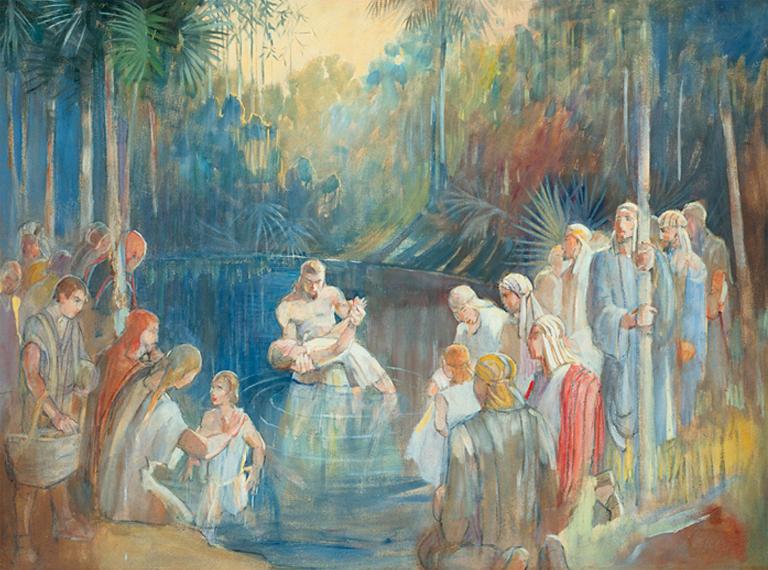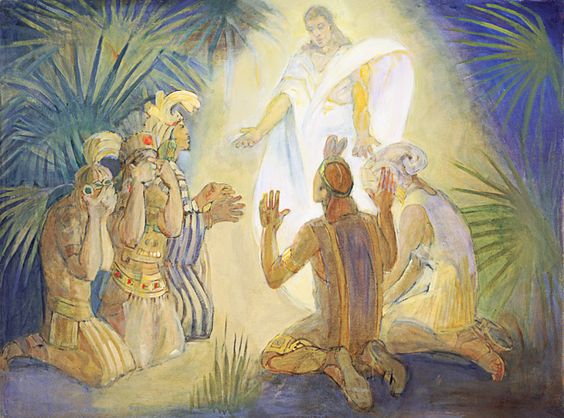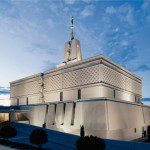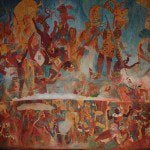
Wikimedia Commons public domain image
Two new articles appeared today on the website of the Interpreter Foundation:
“Asymmetry in Chiasms, With a Note About Deuteronomy 8 and Alma 36,” written by Stephen Kent Ehat
Abstract: Some students of the Book of Mormon have claimed that chapter 36 of the book of Alma is structured as a chiasm. Some of the proposals depart from perfect symmetry, presenting elements of the suggested chiasm seemingly out of sequence. This has often been pointed to as a weakness in the proposed chiasm or as a problem arising from translation or editorial work, or even as evidence that no real chiasm exists over the text of the chapter. Perhaps, however, asymmetry may be a deliberate feature of ancient chiasmus. Understanding the presence and role of occasional asymmetry or skews, as they are called, may help us better appreciate the rhetorical tools employed in crafting chiastic texts anciently. In particular, we can see that the structure of Alma 36 may well be a beautifully crafted chiasmus featuring what may be an intentional skew similar to those that scholars have identified elsewhere in scripture. One such other chiastic text with a skew in it appears to be Deuteronomy 8. Indeed, one skew proposed in Alma 36, together with conceptual and other structural characteristics of the text, including the proposed chiasm of the text, perhaps suggests that some of the message and structure of Deuteronomy 8 may have served as a model for part of the message and structure of Alma 36.
“Interpreting Interpreter: Imperfect Symmetry,” written by Kyler Rasmussen
This post is a summary of the article “Asymmetry in Chiasms, With a Note About Deuteronomy 8 and Alma 36” by Stephen Kent Ehat in Volume 59 of Interpreter: A Journal of Latter-day Saint Faith and Scholarship. All of the Interpreting Interpreter articles may be seen at https://interpreterfoundation.org/category/summaries/. An introduction to the Interpreting Interpreter series is available at https://interpreterfoundation.org/interpreting-interpreter-on-abstracting-thought/.
The Takeaway: Ehat argues that the imperfections in the symmetry of chiasms, or skews, do not necessarily invalidate a proposed structure, but may have been included on purpose to highlight portions of the text or to avoid imitating divine perfection. He applies this to the skews of Alma 36, suggesting that they may serve a literary purpose and that they align with skews seen in biblical chiasms.

(Minerva Teichert, ca 1950-51; LDS.org)
I failed to supply a link to the article on which I drew for yesterday’s blog entry, so here it is: Walker Wright and Don Bradley, “‘None That Doeth Good’: Early Evidence of the First Vision in JST Psalm 14.” I commend it to your attention.
Today, I’ve turned to a review essay that appears in the same volume of BYU Studies: Michael Goodman and Daniel Frost, ” Constancy amid Change: Latter-day Saint Discourse on Gender and Sexuality,” BYU Studies Quarterly 61/3 (2022): 191-217. The article considers the arguments and claims of Taylor G. Petrey, Tabernacles of Clay: Sexuality and Gender in Modern Mormonism (Chapel Hill: University of North Carolina Press, 2020). Michael Goodman is an associate professor in the Department of Church History and Doctrine at Brigham Young University, where Daniel Frost is an assistant teaching professor who also serves as Director of Public Scholarship in the School of Family Life.
This passage seems to me quite significant apart from the overall thesis of the review essay, which is, of course, also very important. With one exception, I’ve omitted the footnotes:
A search of general conference addresses from 1851 to 2020 for the words “race,” “races,” “racial,” “racism,” “black,” “Negro,” “Caucasian,” and “skin” (almost 2,200 references) failed to produce a single direct reference to maintaining white or any other racial purity. There were problematic race-based statements in general conference that showed the speaker did not believe in the equality of different races. However, none of the general conference statements explicitly advocated for maintaining white or any other kind of racial purity.
Knowing of the several explicitly racist statements by early Church leaders, some of which are listed in Tabernacles of Clay, we expected to find many such statements in the more than two thousand references in general conference since 1851. We were surprised at the result. Again, there were a few statements that would be justifiably considered racist by most people today. However, by a margin of well over 20 to 1, the majority of statements from general conference regarding race affirmed the dignity and worth of all people and called upon Church members to do better in their attitudes, beliefs, and behaviors toward all races.* Some of these statements explicitly condemned the belief in white racial superiority. One example is David O. McKay, who condemned those in the world who were “arrogating to themselves racial superiority.”
It might be tempting to believe that the teachings of the latter half of the twentieth century created this largely nonracist teaching record. But that is not what the actual search found. Statements about racial equality and human dignity were spread throughout the nineteenth, twentieth, and twenty-first centuries. It is also true that the few problematic statements were predominately from the nineteenth century. This comprehensive search of every talk in general conference shows the complex nature of racial understanding even in the early days of the Church. Would it be accurate to state that Church leaders held no racist beliefs because the overwhelming majority of their statements about race in general conference were remarkably egalitarian? No—we have sufficient counterexamples to disprove that view. Would it be accurate to claim that Church leaders believed and regularly taught white supremacy and the need to maintain white racial purity since the historical record shows that a few did? No—such a claim is not supported by the overall record.
(*footnote) Examples often spoke of the oneness of man, that God is the father of all of us, that all are alike (often quoting or paraphrasing 2 Nephi 26:33), that all are called to be saved, that all have equal rights, that all humankind’s spiritual nature is that of God’s children, and so forth. Several of these statements came from individuals for which we also have record of more racist statements, including Brigham Young (May 1871), Charles Penrose (April 1880), George Q. Cannon (April 1879, October 1880), and Orson F. Whitney (April 1928).
Posted from Cabo San Lucas, Mexico













